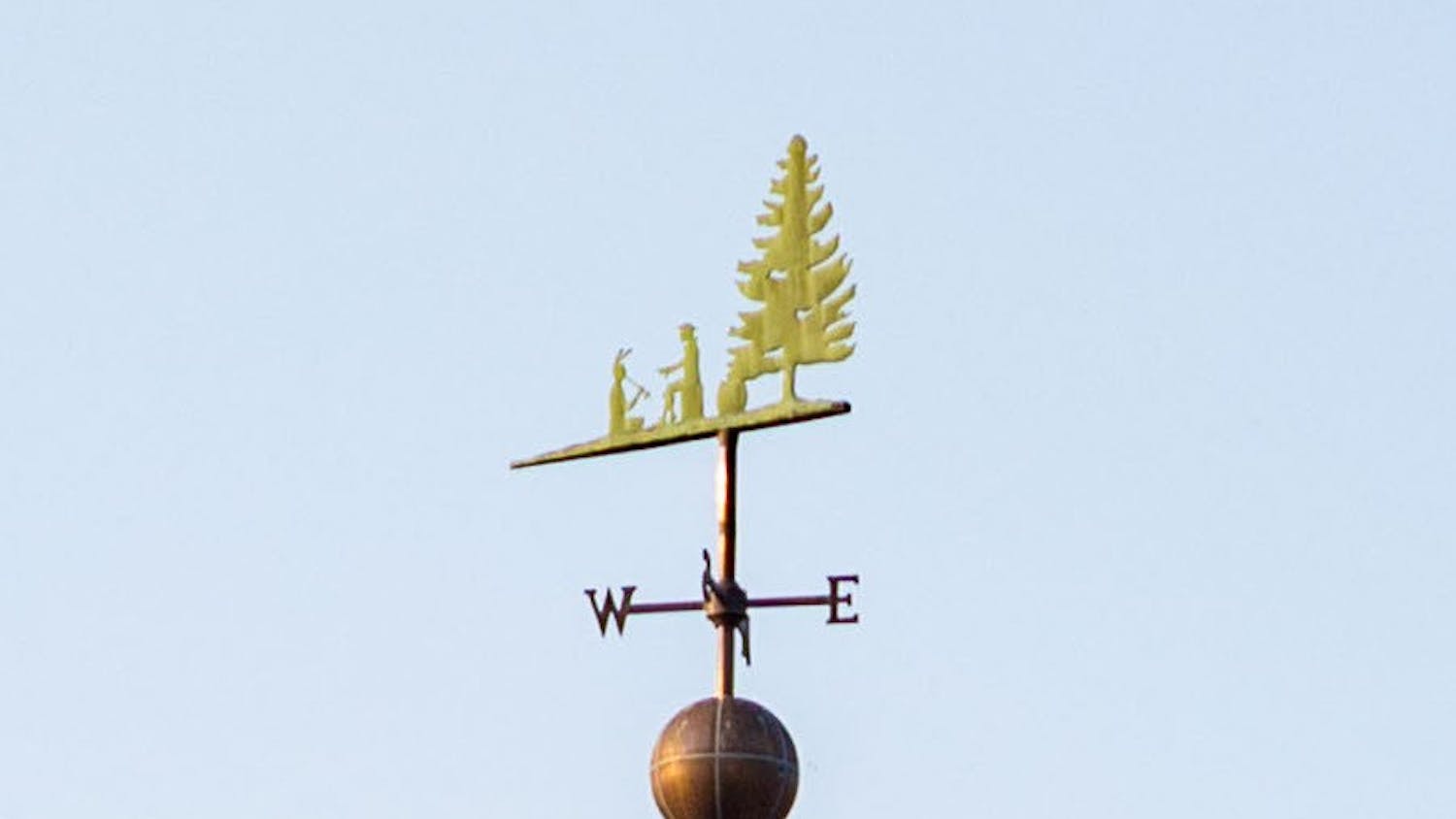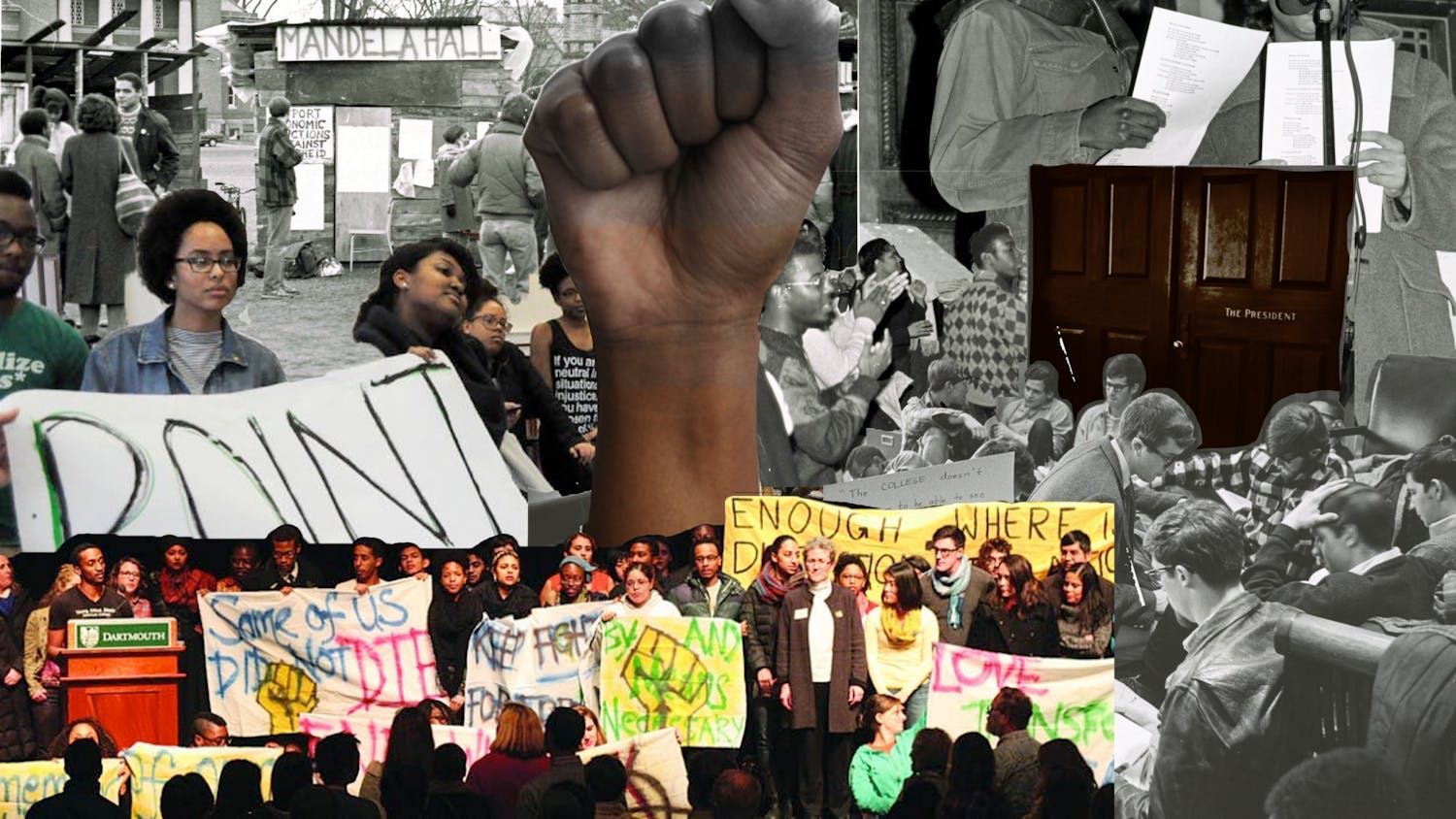Over the past few years, controversies over the removal of public monuments have raged across the nation and throughout the globe in any place still grappling with the legacies of European colonialism and 19th century scientific racism. Dartmouth is no exception and may even be a bellwether site, for debates over public art on its campus have been frequent and ongoing for the better part of the last century. For those of us, like myself, who have been involved in these debates, change has felt painstakingly slow. However, it is understandable that for those who have not, decisions — like the removal of the weather vane from the tower of Baker-Berry Library — can seem sudden and even rash. This is in part why a working group, which I co-chair, has been convened by College President Phil Hanlon to make recommendations for a more consistent and transparent process going forward.
Since the College announced the relocation of the weather vane to museum storage, there has been a lot of public commentary on social media and some confusion about what drove the decision. In tone and substance, this commentary reflects the emotional partisanship that characterizes our national conversation. One thread of this commentary accuses the College of “erasing history,” and responding to political demands at the expense of its own history and traditions. Others have invoked the artist’s intentions to dismiss those who recognize the harmful ideas about racial hierarchy and civilization communicated through the weather vane’s iconography.
While these positions do not exhaust the full range of opinions that have been offered, they capture some of the commonplace assumptions that often frame these debates. As a scholar of American art with a particular expertise in public art and the role that images of Indigenous peoples and culture have played in the nation-formation of settler-states, I can shed light on these issues. I hope that in doing so, I can help move the conversation from the realm of feelings and opinion to one more informed by research and the cultural expertise of individuals from groups who have been either disregarded or spoken for when these controversies erupt.
First, the meaning of public art always exceeds the stated intentions of the artist. Artists traffic in images that have long histories and layers of meaning. Artists sometimes deploy these critically, but also (especially with regard to imagery related to Indigenous peoples) recycle them uncritically.
Second, works of art sited in the civic realm must be accountable to a broad public. Unlike objects in museums, which can be contextualized by curatorial narratives, publicly-sited art is understood to represent the values of the community in which it has been placed. When an object stands for an institution and its educational mission, questions about its meaning go beyond the artist’s intentions or the imagery they used; they touch upon broader questions of shared values, reception and an always-evolving sense of place.
The imagery on the Dartmouth weather vane draws from a visual tradition traceable to illustrations of “encounter” between Europeans and the Indigenous inhabitants of the Americas. These 16th century prints were replete with representations of European men, in period dress, bringing enlightenment to half nude “savages” seated in landscapes and wearing feathered skirts or crowns. That these images were often made by artists who had never left Europe only underscores the fantasies and fears that drove the invention of these visual allegories. Ideologically, these images sought to justify European colonization and argue that Indigenous peoples were complicit in their own dispossession.
There is a voluminous scholarship on this history and imagery that informs our understanding of objects like the weather vane today. In short, criticism of this object for the racist ideologies it — perhaps unwittingly — peddles is not mere capitulation to the pressures of our political moment. Rather, it reflects generations of research on the topic, and this should be acknowledged in any account of the decision to relocate this object.
The legacies of colonial imagery are all around us. The American proclivity for appropriating Native American culture and identity for myriad purposes — without regard for the impacts this imagery has on Indigenous Americans — continues to this day. We see it inscribed on relief panels in the U.S. Capitol rotunda, in the rituals of summer camps, in TV programs like “Survivor” or “Westworld,” in brand culture, team mascots, Disney movies, Warner Brothers cartoons, epic poetry and westerns, children’s literature, the American songbook and novel and even the self-stylings of the so-called “QAnon Shaman” who stormed the Capitol on Jan. 6.
This history also subtends the imagery of Dartmouth’s founding. Like the weather vane, much of this imagery is an artifact of the early 20th century, a period when Dartmouth students unselfconsciously engaged in what Philip Deloria — a member of the Standing Rock Sioux Tribe and a historian at Harvard University — calls “playing Indian.” These decades represented the apex of “playing Indian” at Dartmouth, and unfortunately, the nadir of its commitment to its founding charter, to educate the “youth of the Indian tribes of this land,” as Dartmouth historian Colin Calloway has shown. So it is not surprising that the artist who designed the weather vane, like those illustrators in the 16th century, conjured an imaginary scene that draws from the tradition of “encounter” narratives rather than the actual conditions of education at the College’s founding. Facts that the weather vane obscures include but are not limited to: the significant efforts of Samson Occom, the Mohegan minister whose erudition impressed aristocrats in Great Britain and helped to secure the funds for the college, the role of enslaved labor in building and running it, or Eleazar Wheelock’s decision to shift his educational enterprise to the instruction of elite white men once he had secured a location in Hanover.
Discussions of public art have to be informed by scholarship or they risk perpetuating misinformation that obscures, rather than illuminates, the historical, ethical and artistic questions at stake. I hope that as a community, we will seek a deeper understanding of the history of colonial imagery and its legacies so that we do not have to keep returning to point-zero in these important conversations.
Coffey is a professor in the art history department. She is the co-chair of a working group convened to review College iconography.
The Dartmouth welcomes guest columns. We request that guest columns be the original work of the submitter. Submissions may be sent to both opinion@thedartmouth.com and editor@thedartmouth.com. Submissions will receive a response within three business days.



